Material Difference: Sharp Dressed Man
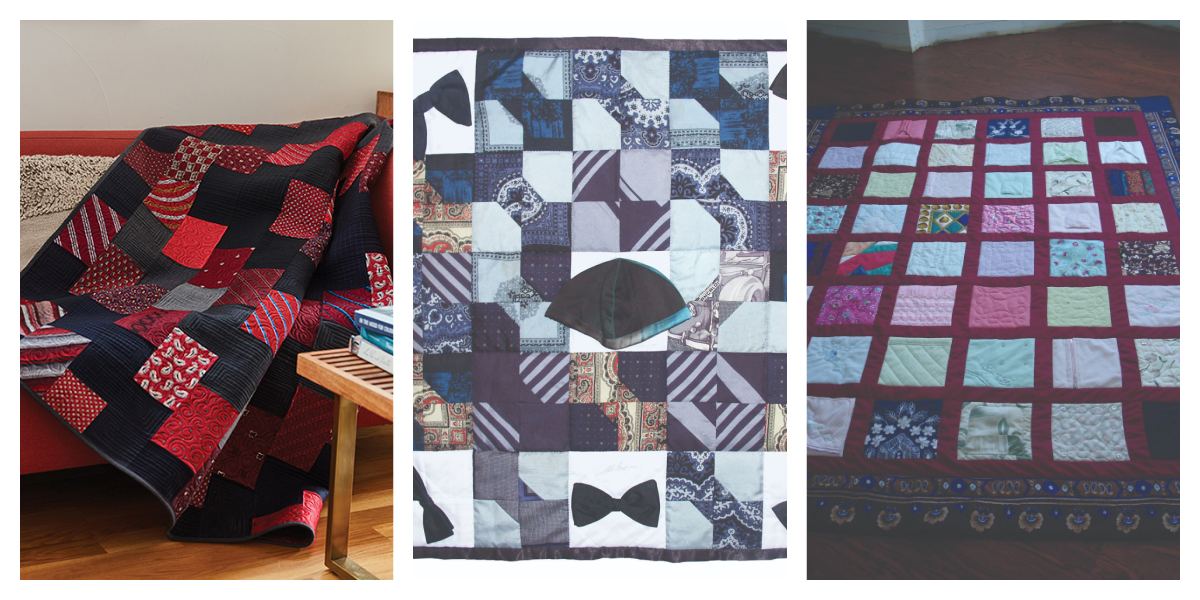
This quilt was featured in the Jan/Feb 2019 issue of Quilty and as Father’s Day approaches, we couldn’t be more excited to revisit this stunning quilt by Elaine Theriault that combines cashmere wool suiting and silk ties. Like a well-dressed man, this quilt stands out in a crowd and is quite possibly the perfect quilty gift for a gentleman in your life. Learn more about how Elaine created this beautiful quilt below, as well as Tracy’s personal experience with combining fabrics of different weights.
Every once in a while you see one of those quilts. You know, those quilts where you are instantly smitten from the moment you see it. For me, Sharp Dressed Man by Elaine Theriault is a quilt that falls into that category. It just shimmers. Apparently I am not the only one who is totally infatuated. My husband stopped by my office one day while the quilt was hanging on my wall and he said “Yes, please! No, really…Ask the designer if I can buy that quilt. I’m serious.”
What did Elaine use to create this stunning quilt? “The men’s suitings were begged from a friend who is the Home Studies teacher at the local high school. Her father was a tailor and he had sample books. She gave me three, I used two. I used ALL of the swatches in the two books. The suit samples were 100% wool or cashmere/wool blends–very fine and absolutely a dream to work with. The ties, well, those are mostly silk, but a few poly ties got mixed in. I thought I had enough red, but once I got started, no way near enough red ties so I scrounged two local thrift shops and bought all that they had. I can’t wait to find a use for the leftovers—they are GORGEOUS!”
Looking at this quilt in person draws you in, begging you to examine it closer. Elaine was so successful in taking these two very different weight fabrics–wool suiting and silk ties– and combining them beautifully. The wool cashmere suiting is soft to the touch and the silk ties are luminescent within the quilt comparatively. She used flannel for the backing and more wool suiting for the double-fold binding.
When you look at the quilt, the fabrics just go together, but in reality, I have to remind myself that the fabrics are very different. The weight of the silk fabric is light and airy. The wool is heavy and has a coarse texture.
If I tried to sew these two fabrics together, the “weight” of the fabric would be an issue and the silk would likely pucker. So how did she do it? My own experience in combining fabrics in my sewing room pales in comparison to what Elaine is able to do. The first project I remember making was a Halloween costume made of faux fur with a silky lining… oooh man, that was a hot mess! I’m just glad that the heavier fabric was on the outside and only the wearer was aware of my pathetic first attempt at combining fabrics of different weights.
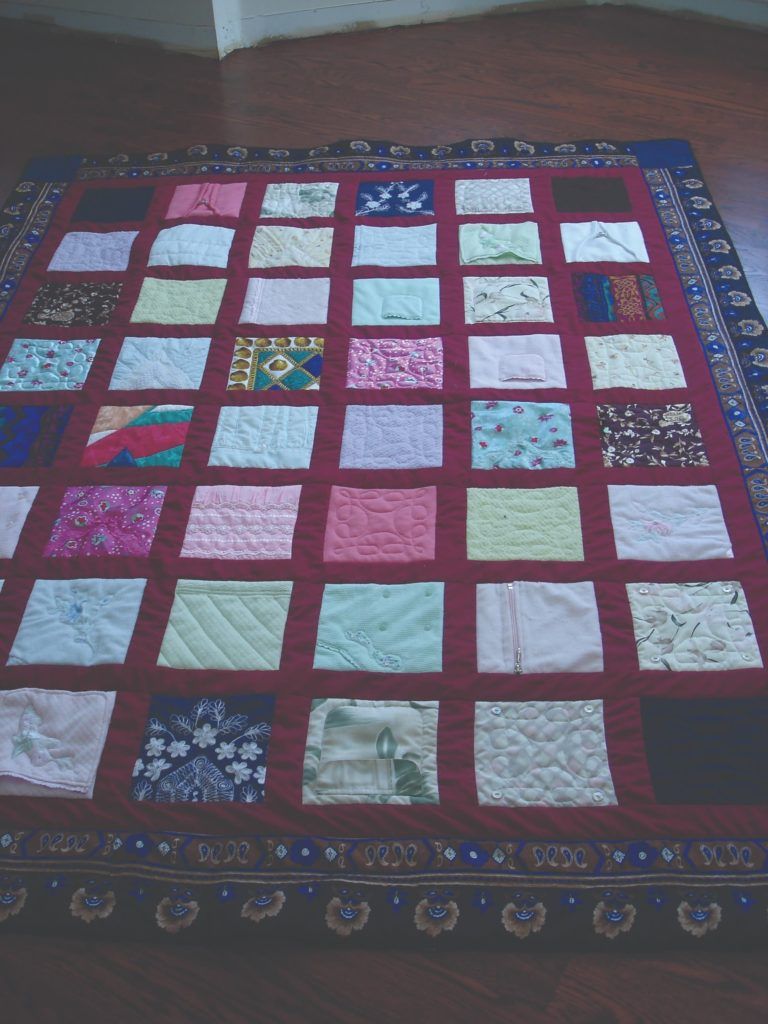
As a young fledgling quilter, I had the wacky notion that I could combine a beautiful decorator weight upholstery fabric with some cotton. (What? It looked so pretty together on the bolts.) Uh, yeah… that, too, was not great! By the time I discovered crazy quilting, I was so completely terrified of using fabric of different thicknesses, I opted to use only cotton. It looked fine and I had fun, but it certainly was not a beautiful combination of texture and shine like a traditional crazy quilt. When I reached out to Elaine to ask my probing questions about how she combined these fabrics, her response was not what I expected. She was cool and easy going. “I LOVE mixing different weights of materials in my quilts. I’ve made numerous quilts just from ties, but I really wanted to bring in the suiting to tie in (wink, wink!) the completely masculine aspect of the quilt. I’ve seen lots of quilts with ties, but not suiting and ties.” Elaine is fearless in the face of combining fabrics in her quilts. “I’ve made quilts from loads of other materials – T-shirts, boiled wool jackets and camisoles, scraps from the Canadian National Ballet costumes to make a ballet quilt, baby clothing to name a few. I’ve got a few more ideas up my sleeve – denim and doilies and I’m on a craze right now with crimplene–just got a stash of it and want to see what happens.” (Crimplene was a polyester yarn that was developed and trademarked in the 1950’s. It was woven into fabrics that were wrinkle resistant, but it was most often used to create double knits.)
“So the bulk of what I make is with cotton, but it’s great to use these weird fabrics to appreciate working with cotton. These quilts are my experiments. I just found the MOST GORGEOUS piece of iridescent red denim or twill and I can’t wait to figure out what to do with that. It’s stunning!”
Elaine’s excitement for combining weird groupings of fabrics is infectious, but how do you ensure that the lightweight fabric doesn’t pucker and wrinkle when it is combined with a heavier fabric like wool? Well, you make the lighter fabric “heavier” by adding stabilizer.
What about needles and thread? Well, that answer is more complex. It honestly depends upon the fabrics you are combining. For this project Elaine did not get fancy. “I tend to use a regular needle and thread combo. It can be cotton or poly thread, it makes no difference. The needle I used is just a regular old Microtex Sharp needle—my favorite for everything.”
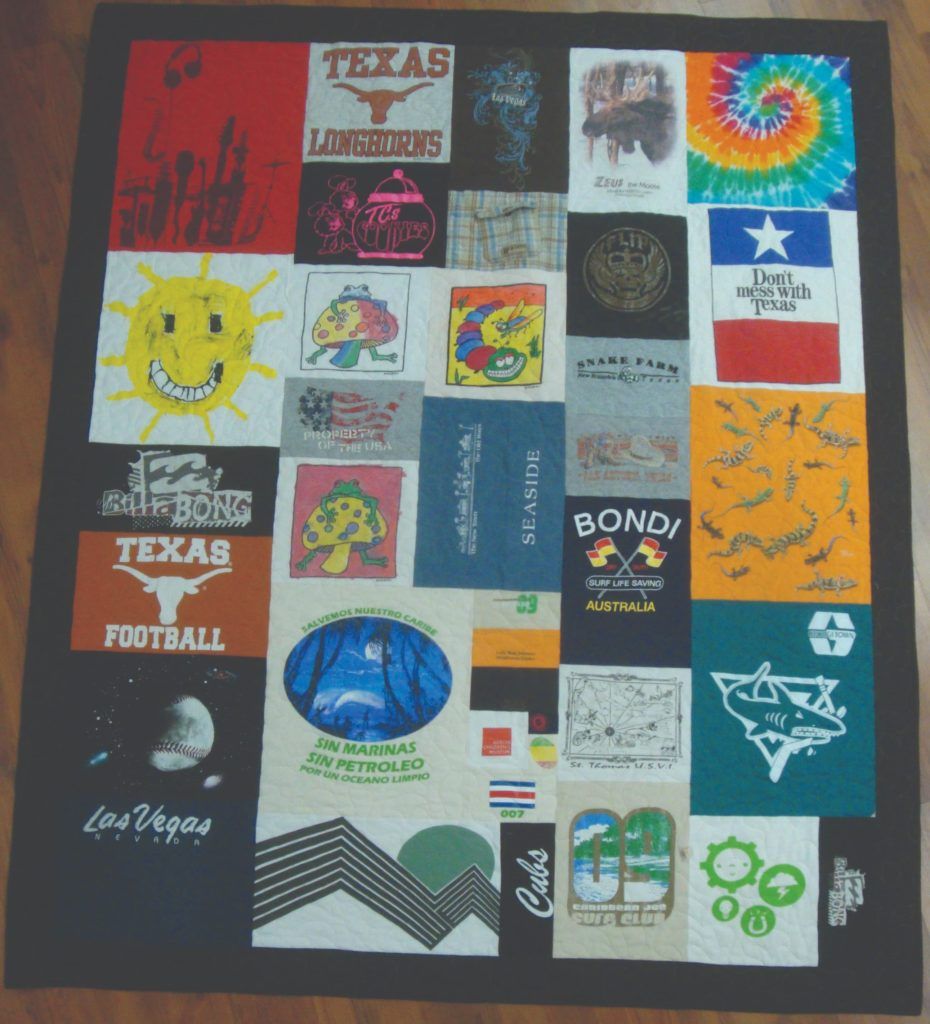
Now, if you are stitching on leather or a similar man-made material, or perhaps thick denim, the needle is more important. You will want to choose a leather needle for leather, denim needle for denim, stretch for knits, etc. The point of the needle is designed to pierce each of those fabrics differently. You also want to use the smallest needle possible for the weight of the thread you are using. This reduces the size of the holes in your fabrics.
Another consideration is the iron temperature you use when pressing all of these unusual fabrics. If you are working with a lot of different types of fabrics, then you need to be careful that you don’t have the temp too high to burn, melt or scorch the more delicate fabrics. A safe bet is to set the temp for the lightest materials used, rather than the heaviest. Using a pressing cloth is also a good idea. “I tend to be a bit reckless on that part, but so far, so good,” Elaine quips.
“One other thing is the washability of the quilt. I’ve been known to take EVERYTHING that I receive to make a quilt and throw it in the washer. I did that with the ties in this particular quilt, but couldn’t do that with the wool samples. One or two of the ties did fall apart due to age and one was too badly stained to be used. I highly recommend when making quilts with different weights of fabric, that either everything be washed or a note go with the quilt that it be washed in the gentle cycle in cold water, no dryer. That way, we don’t end up with a disaster. “
Chances are pretty good that I will never find the old tailor’s sample books that inspired Elaine’s creation, but I do have thrift stores. I imagine someday soon I will be hitting a sale at the Goodwill and leaving with a pile of ties and men’s suits. After all, my husband might never stop lamenting “I would be so warm if I only had a flannel backed, wool quilt to keep me warm…” if I don’t at least try to recreate this quilt.

You can find the Sharp Dressed Man quilt pattern by Elaine Theriault in the Jan/Feb 2019 issue of Quilty along with more stunning quilt patterns!



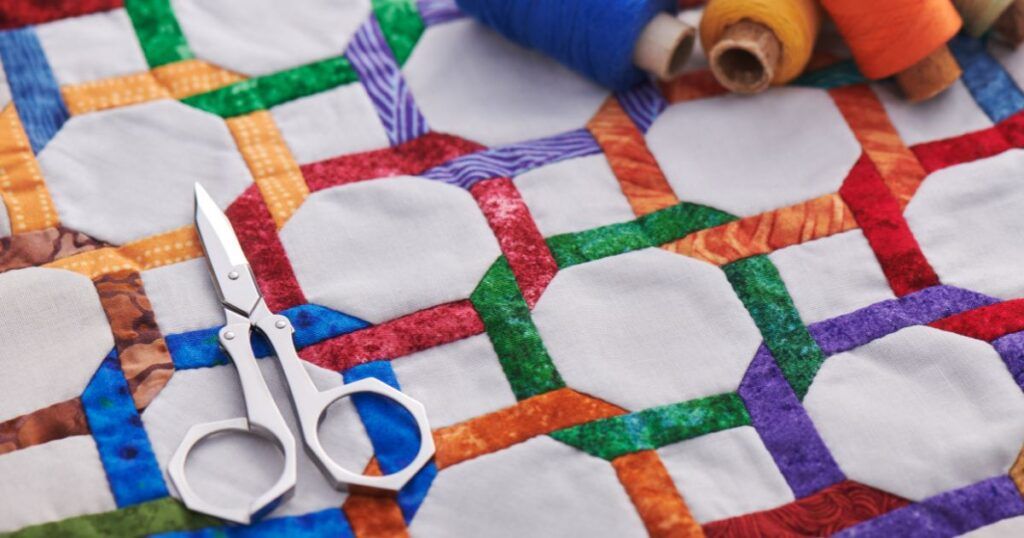

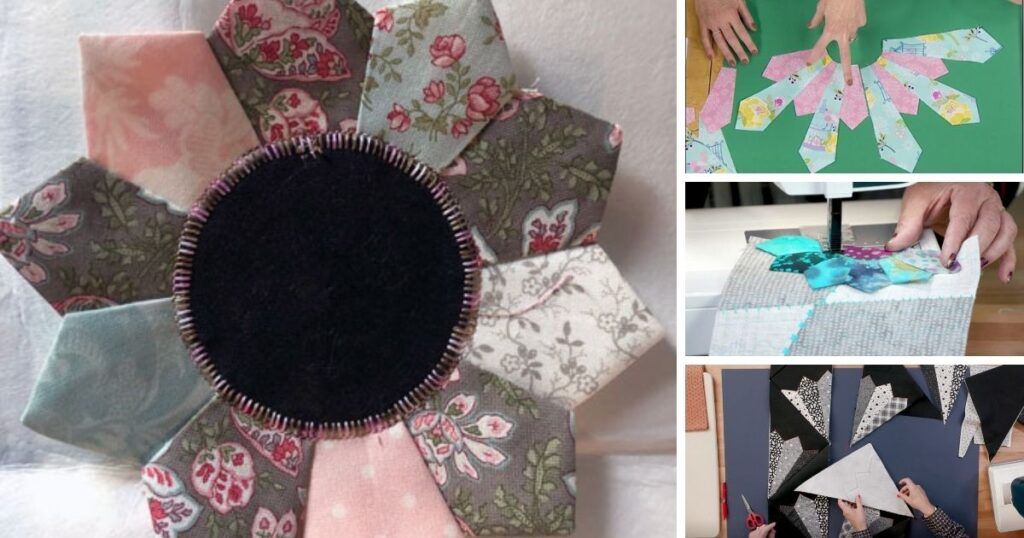

Join the Conversation!